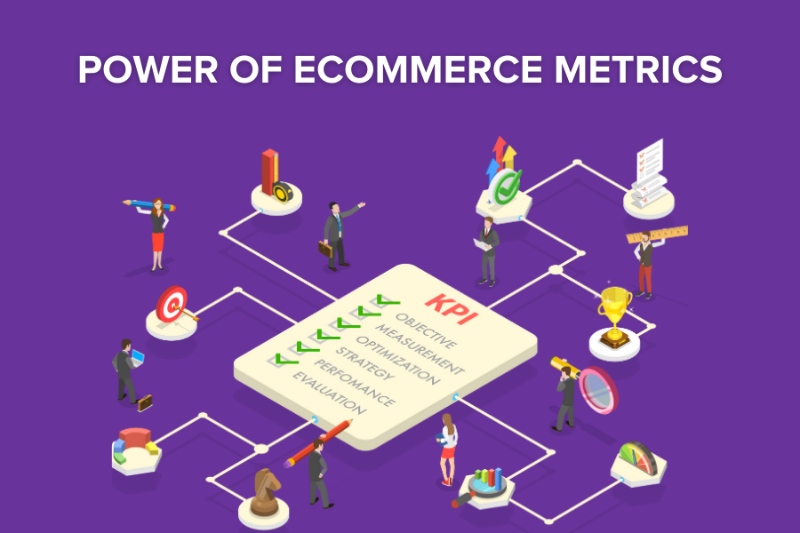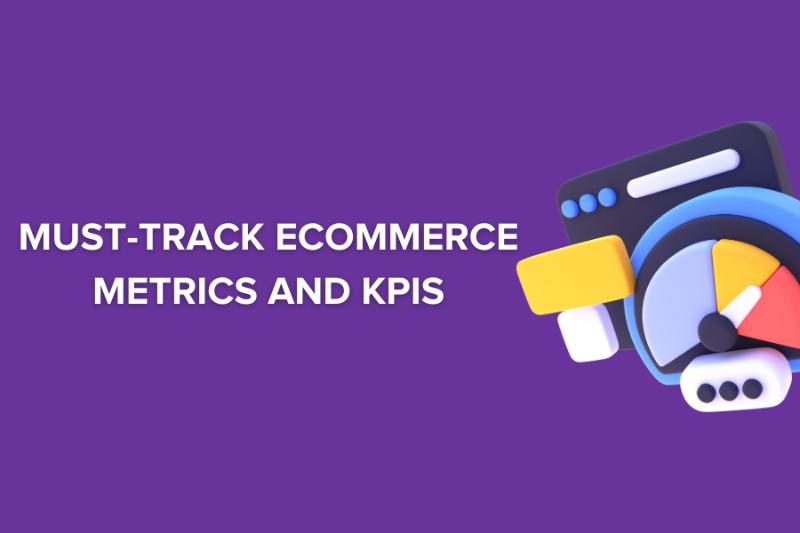
In the fast-paced world of e-commerce, tracking and analyzing key performance indicators (KPIs) is crucial for success. Your e-commerce metrics provide valuable insights into your online business's performance, helping you identify areas of improvement and capitalize on opportunities. In this blog post, we'll dive into the essential e-commerce metrics and KPIs you should track to unlock the potential for growth and achieve e-commerce success. Let's get started!
Contents
I. Understanding the power of E-commerce metrics

Before delving into specific metrics, let's understand the significance of ecommerce metrics for your online business. Ecommerce metrics help you measure your performance, identify trends, and gauge the effectiveness of your strategies. By analyzing these metrics, you can make data-driven decisions and align your efforts with your business goals.
Actionable Points:
- Familiarize yourself with the essential ecommerce metrics and their relevance to your business.
- Set specific goals and KPIs to track your progress effectively.
- Invest in reliable analytics tools or platforms to collect and analyze data efficiently.
II. Must-track Ecommerce metrics and KPIs

1. Conversion Rate
The conversion rate is a vital metric that measures the percentage of website visitors who complete a desired action, such as making a purchase or signing up for a newsletter. A high conversion rate indicates effective marketing and a seamless user experience.
Actionable Points:
- Optimize your website's user interface and checkout process to reduce friction.
- Implement A/B testing to identify and implement conversion rate optimization strategies.
- Monitor and analyze customer behavior to understand what drives conversions.
2. Customer acquisition cost (CAC)
CAC calculates the average cost of acquiring a new customer, including marketing and advertising expenses. Keeping CAC in check is crucial for maintaining a healthy profit margin.
Actionable Points:
- Evaluate the effectiveness of your marketing channels and campaigns to optimize spending.
- Focus on customer retention and loyalty programs to reduce CAC over time.
- Measure the lifetime value (LTV) of customers to understand the long-term profitability.
3. Customer retention rate
Customer retention rate reflects the percentage of customers who continue to do business with you over a specific period. A high retention rate indicates customer satisfaction and loyalty.
Actionable Points:
- Prioritize customer support and post-purchase communication to nurture relationships.
- Implement loyalty programs, discounts, and personalized offers to incentivize repeat purchases.
- Gather customer feedback to address pain points and enhance the overall shopping experience.
4. Average Order Value (AOV)
AOV measures the average amount spent by customers in a single transaction. Increasing AOV can boost revenue without acquiring new customers.
Actionable Points:
- Cross-sell and upsell relevant products or offer product bundles to increase order value.
- Implement free shipping thresholds to encourage customers to spend more to qualify.
- Leverage personalized product recommendations to drive additional purchases.
5. Cart abandonment rate
Cart abandonment rate indicates the percentage of users who add items to their cart but leave the website without completing the purchase. Reducing cart abandonment can significantly impact your revenue.
Actionable Points:
- Simplify the checkout process, offer guest checkout options, and minimize form fields.
- Implement retargeting strategies to remind customers about their abandoned carts.
- Provide transparent shipping costs and display trust signals to build confidence in the purchase.
III. Analyzing and acting on E-commerce data

1. Regularly review your metrics
Consistent monitoring and analysis of your ecommerce metrics are vital for staying on top of your business's performance. Create a schedule to review your metrics regularly and identify trends or changes that require attention.
Actionable Points:
- Set up dashboards or reports to receive automated updates on your key metrics.
- Compare performance data across different time periods to identify seasonal trends.
- Conduct weekly or monthly performance meetings to discuss actionable insights with your team.
2. Identify strengths and weaknesses
Understanding your strengths and weaknesses is essential for devising effective growth strategies. Identify top-performing products, marketing channels, and customer segments to replicate success.
Actionable Points:
- Analyze which products generate the most revenue and explore opportunities for expansion.
- Evaluate the effectiveness of your marketing efforts and focus on channels that drive the highest ROI.
- Identify areas of customer dissatisfaction or high cart abandonment and address them promptly.
3. Set realistic goals and take action
Based on your data analysis, set realistic goals and actionable strategies to improve your ecommerce performance. Define clear action steps for achieving these goals.
Actionable Points:
- Set specific, measurable, achievable, relevant, and time-bound (SMART) goals.
- Delegate responsibilities and establish accountability within your team.
- Continuously track progress towards your goals and make data-driven adjustments as needed.
Analyzing your ecommerce metrics and KPIs is a fundamental aspect of running a successful online business. By understanding the power of ecommerce metrics, tracking essential KPIs, and taking actionable steps based on data insights, you can optimize your performance, enhance customer experience, and drive sustainable growth. Remember, success in ecommerce is an ongoing journey of refinement and improvement, so keep evolving with the ever-changing landscape to stay ahead in the competitive market.
Happy analyzing and growing!
View more such blogs 📰
Shipping and fulfillment for Ecommerce: Strategies for delivering a seamless customer experience
Marketing your online store: Effective tactics for driving traffic and boosting sales
Inventory management for E-commerce: How to keep track of your products and avoid stockouts
Building a strong online brand: Tips for creating a memorable and trustworthy Ecommerce presence


